In our latest beat construction tutorial we focus on a rough, dirty house beat inspired by the likes of Levon Vincent, Anthony Naples and Huerco S.
Beat Dissected is a regular series in which we deconstruct drum patterns, showing you how to recreate them in any DAW. Just copy our grid in your own software to recreate the loop.
Here’s the beat we’re building today:
To download the samples for this beat, click here. The samples are provided on a completely royalty-free basis. They may not be sold or given away, either in whole or in part.
You must register for a free Attack account and sign up to receive our newsletter in order to download the samples. New members can register here. Existing members can log in here.
Spec
Tempo
114-122bpmSwing
50-55%Sounds
Mix of organic drum sounds and treated samplesStep 1
Start with a straight four-to-the-floor kick. We’ve gone for a hybrid sound built from a 909 sample layered with an acoustic hit to give a mixture of low-end weight and mid-range punch. Although kick drums are rarely treated to reverb, this beat demands it. The secret is in how the reverb tail is sculpted. Ensure you cut the lows from the reverb return to avoid clogging up the bottom end of the mix. Adjust the decay of the tail so that it just bleeds into the next kick hit – the exact time will depend on the tempo of your track. (Click the images to enlarge.)
Step 2
The tom hits work with the kick to add a subtle bounce to the beat. In terms of the sound itself, we don’t want anything too imposing; we’ve gone for a sample of a live tom which we’ve then bitcrushed and EQd heavily to narrow the frequency range it sits in. Note the velocity variations that help give the groove its momentum, with the hit just after the first kick of each bar delivering a barely audible ghost hit. Note also how low this tom part is mixed, taking a back seat to the other percussive elements that are to be added.
Step 3
Next up are two organic shaker parts, one slightly higher in pitch and significantly higher in volume to the other. Choose a sample that has enough decay to fill the spaces in the beat and one that has both mid-range body and a certain amount of old-school grit (if it’s sounding a bit too ‘nice’, then try passing the sample through a subtle saturation or tape plugin). Note the tuning of the shaker lines in relation to the tom; tweak the tuning of all three until there’s an effective tonal interplay between the parts. Finally, send a little signal from each shaker to the same reverb used on the kick.
Step 4
Yet more reverb is introduced with the claps and a tambourine line. The tambouring mirrors some of the clap hits to add a little extra high-end punch. Again, note the different velocity levels of the clap hits, essential for adding life to the part. Also note how some of the claps are triggered very slightly before the beat, adding interest and a touch of wonkiness to the groove. It’s worth pointing out too that the clap ‘fill’ doesn’t have to be included in every other bar; you can choose to roll it out only for transitions or turnarounds at the end of sections. The reverb used on the clap and tambourine is different to the snare one: a longer tailed plate that fills in the gaps between hits.
Step 5
The high-end is comprehensively filled out with a hi-hat line and a layered tambourine/shaker. The former plays selectively to energise certain parts of the beat, while the latter plays 16ths. Applying swing to the tambourine/shaker part will have a major impact on the feel of the beat, so experiment carefully to find the setting which works best. The changes in velocity across both lines are paramount; it may be time-consuming to tweak every hit but it pays dividends in terms of the final result. A little reverb on these last two sounds helps tie everything together.
To download the samples for this beat, click here.

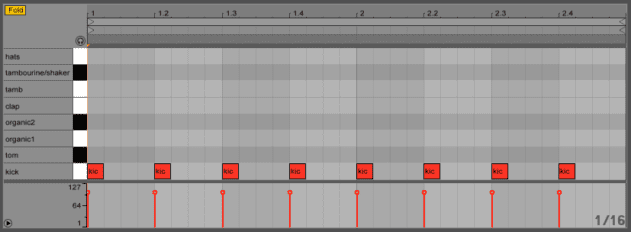
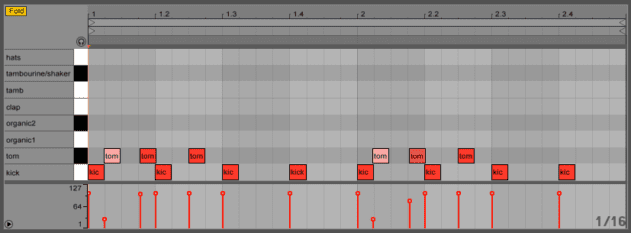
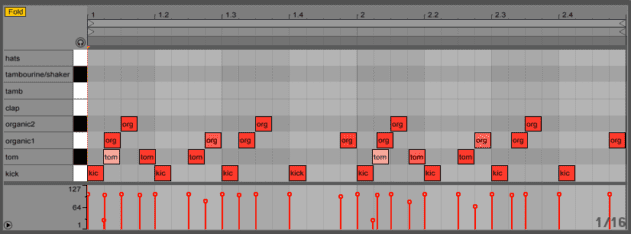
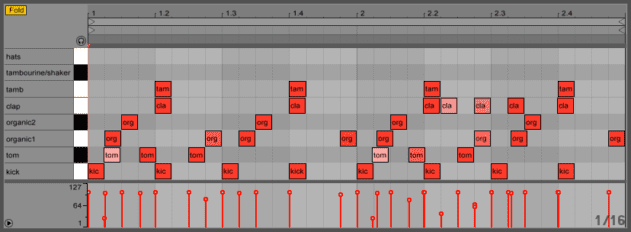
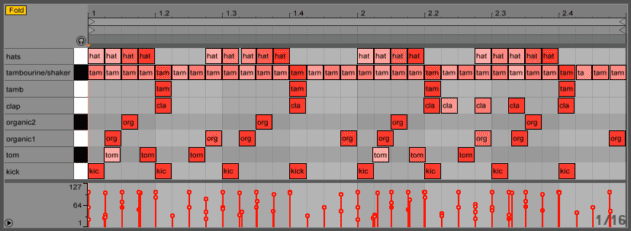
05.54 PM
awesome stuff. please more of the complex patterns! :))
10.04 PM
GREAT!!! Love attack magazine!
01.37 AM
Great complexity for a change. More of these please, great work. Thank you Attack Magazine!
05.55 AM
Been waiting for a new technique post for weeks!
07.17 AM
Please make more beat-dissected! They’re the greatest thing ever and I every time I see a new one it makes my day! I love the fact that you guys take time to analyze all these sub-genres, and I’ve found my drum programming gets better with every post!
09.11 AM
oh please, can’t you just tell us how to make that one big hit of the season? or at least tell us which of your tutorials to put on top of each other in order to get it? it sucks sooo much to have to be creative yourself and to have original ideas when making music.
10.05 AM
@SNIPPY – Not sure your point? are you saying that learning from tutorials means you’re not being creative? I see the BDs as starting points that I can use my own sounds in, shift things around, imprint my own effects. if you want to make the ‘one big hit of the season’ you’re probably best off employing a ghost producer like most of the real big money-earners in the industry.
11.17 AM
ross – errm, can you spell sarcasm?
learning from *these* tutorials is hardly creative.
CREATE, don’t RECREATE.
and no, “starting points that I can use my own sounds in, shift things around, imprint my own effects” either is hardly creative.
if you wanna copy/paste, take your own original material as a source.
not even to mention that these snippets sound like awfully lame and sterile rip-offs of the artists’ sounds they were “inspired” by.
12.17 PM
@SNIFFY…
I guess to each their own 🙂 Good luck in your music making.
12.22 PM
In China during one of the most reverved period of creativity for that nation. To be an artists you had to be officially trained first – part of that training was first you had to be able to perfectly recreate earlier masterpieces, and you were not allowed to be creative until you had perfected the skills needed to recreate masterpieces completely.
Some of the most groundbreaking and beautifully creative pieces of art came from these people who were forced to copy first to learn there “skills” before being let go on creating there own pieces.
Just saying snippy, there are many valid way to learn craft, to learn art…both are separate but also very connected.
12.24 PM
Of course those, copied masterpieces were never released to the public, not as far as i know, and that problem we have with the modern music industry is separate and shouldn’t stop people from wanting to learn the craft…which takes years.
12.39 PM
Top quality. The beat disected feature really seperates Attack from others. Keep them coming
06.02 PM
inspired by the likes of Levon Vincent, Anthony Naples and Huerco S
10.00 AM
hey snippy (name well chosen) i bet your music would improve if you relaxed.
everyone learns in different ways. some people learn best by first copying. claude von stroke’s advice to beginning producers is to do exactly that – try to remake a tune that you love. most people reading this are probably going to pick up on how to employ a pattern that sounds nice , and add it to their tool kit of ways to work.
just because you learned something from attack/youtube/wherever doesn’t mean that it can’t be your own original material.
and noone claimed that these snippets are timeless pieces of music. only that they give you an idea of how the patterns and structures work in a particular style
09.04 PM
You don’t learn guitar by randomly striking the strings… first you learn the greats, you learn Hendrix for example, then once you have built up your knowledge of how the masters made their music, you make your own.
01.26 AM
Mh. He was just another lazy troll. And probably an unrespectful producer.
11.27 PM
Thanks for this, Really helpful for a beginner
10.07 AM
This is a great beat, thank you once again Attack mag. What reverb you using on these drums? It sounds great! And is there some kind of phaser going on the clap in the audio examples?
10.27 AM
@DJ Dippy … you can go your own way.. go your own waa aa aayy
08.48 PM
Nice!! Thx vor this tutorial!
09.47 AM
I’ve made a track based on this tutorial! Check if out! 😉
https://soundcloud.com/pommol/left-unattended#t=0:00
07.38 PM
Nothing sterile about this bad boy! For me this is a sound I love but couldn’t quite get right. Now I know I can make it original by using my own sounds and patterns. That would be like saying sampling is not creative? Same concept it can be original and creative or carbon copy and not creative. I saw Matt Sargent on the post. If you want to make house music with a raw and rugged edge I can’t advise you enough to check out the no dough blog and packs ! Xxx
12.47 PM
Is it no longer possible to log into/register with Attack or to download the samples to put together this beat? Whenever I click on the links at the top of this page to login/register/download samples, I am just taken to the Attack home page. Any advice?